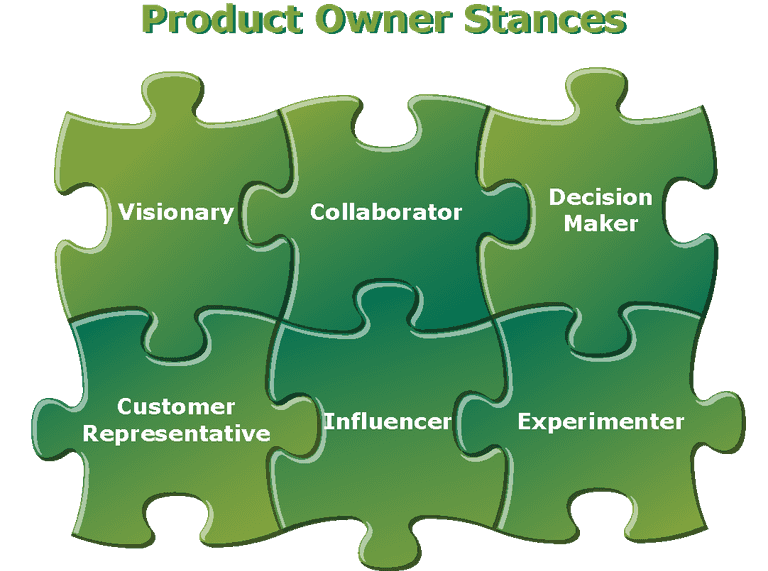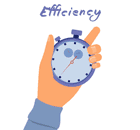What is a Product Owner? Overview, Roles, and Responsibilities
A Product Owner creates the product vision and backlog and is accountable for product value. Follow along to learn everything about the Product Owner.

Scrum has become a popular development methodology that uses an incremental development approach to develop products. It has modernized many traditional project development practices and introduced new roles, responsibilities, and processes. One such role associated with Scrum is "Product Owner".
In the bigger picture, the Product Owner's role maximizes the value of the product being developed by the Scrum team. This guide will uncover all about the Product Owner, including the overview, roles, responsibilities, and other details. So, let's get right to it!
What is a Product Owner?
In simplest words, a Product Owner is the person accountable for representing the customer to the Scrum team and maximizing the product value developed by the Scrum team.
According to the Scrum Guide, the main role of the Product Owner is to maximize the product value. This is done differently by different individuals, Scrum teams, and organizations. This means that the job responsibilities of the Product Owner can vary from organization to organization. Some organizations may consider the Product Owner to represent the needs of customers, while others may consider the Product Owner to be a tactical development team member.
Scrum Guide also highlights another accountability of the Product Owner, i.e., effective product backlog management. This includes:
- Designing and communicating the Product Goal;
- Developing and communicating Product Backlog items;
- Prioritizing Product Backlog items;
- Keeping Product Backup transparent, understood, visible, and up-to-date.
Simply put, a Product Owner is a person who ensures that the product is aligned with customers' needs and that the team prioritizes product development in the right way. So, it is important for the Scrum team and the organization to respect the decisions of the Product Owner to make this role a success.
Why is the Role of the Product Owner Important?
Now that we have cleared the basic concepts of Product Owner, the next important thing is understanding the importance of the role.
The Product Owner is an essential Scrum team member. They oversee the product backlog and make sure the team efforts are in the right direction to maximize the product value. Below are the key points about Product Owner that reflect the importance of the role:
- Bridge Between Customers and Scrum Team: The Product Owner acts as a bridge between the customers/stakeholders and the Scrum team. They understand and represent the customers' needs and expectations by crafting the Product Goal and Product Backlog. This way, the development team becomes well aware of the product needs.
- Maximize Product Value: The Product Owner is the key to maximizing the product value. They closely evaluate the customer needs and ROI elements and ensure that the right features and functionalities are developed to deliver the most value to users.
- Adaptability: Customer demands are changing, and new solutions are introduced frequently in the market. Therefore, the Product Owner keeps a close eye on these changes and ensures that the product backlog and priorities are updated accordingly.
In short, the Scrum team will be directionless and may be unable to maximize the product's outcomes without the Product Owner. A Product Owner gives the development team direction and an agenda to focus on and guides them throughout the product journey to maximize the value delivered on every Sprint.
So, if we sum up the Product Owner stances, they will be:
- Visionary
- Decision maker
- Collaborator
- Influencer
- Experimenter
- Customer representative

Product Owner Stance. Source: Scrum.org
Roles and Responsibilities of a Product Owner
The role of the Product Owner is not universally defined or understood. So, the responsibilities of the Product Owner can vary in different organizations. However, below are the important responsibilities of the Product Owner that most of them will execute:
1. Create and Communicate the Product Vision
The Product Owner interacts with the customers/stakeholders to create the product vision. This involves evaluating customers needs, market demands, and other factors to set up the right product vision.
Afterward, the Product Owner communicates the product vision to the development team and other stakeholders. They may even create a product roadmap that properly outlines the vision, priorities, and other product-related details. In short, the Product Owner makes sure that everyone is aware of the product goals.
2. Create and Prioritize Product Backlog
The product backlog is a list of tasks the development team will work on in the upcoming sprints to fulfill the product vision. The Product Owner is responsible for creating the product backlog. This involves finalizing the backlog items and translating them into user stories for better understanding.
Once the Product Owner has created the product backlog, it is prioritized so that important features/functions of the product are developed first. Once done, the product backlog is conveyed to the team. At this stage, the team may even conduct a product backlog estimation meeting to estimate each user story's required effort. This meeting usually uses estimation techniques like Planning Poker, Async Poker, etc.
Read more: Why is it essential to estimate product backlog?
3. Keep Product Backlog Up-to-Date
The Product Owner also keeps the product backlog up-to-date throughout the product development period. If customer demand changes or market dynamics demand new features, the Product Owner updates and prioritizes the backlog accordingly.
4. Collaborate with Stakeholders
As mentioned earlier, Product Owner is the communication bridge between the stakeholders and the development team. The Product Owner collaborates with stakeholders frequently, gets their feedback, updates them about the progress, addresses concerns, and much more.
5. Communicate with Developers
The Product Owner remains available to the development team whenever they want. Sometimes, the developers have doubts about the backlog item or need assistance from the Product Owner when stuck in some bottleneck situation. So, the Product Owner should be able to facilitate developers and clear their doubts in a timely manner.
Read more: Common Challenges Faced by Scrum Teams
6. Participate in Scrum Events
Scrum involves multiple events, such as sprint planning, daily scrum, sprint review, and sprint retrospectives. Although the development team holds and contributes to these events, the Product Owner also participates in them and provides input where required.
During the sprint planning meeting, the Product Owner can guide the development team on how to improve the product in the next sprint based on feedback from stakeholders. Similarly, the Product Owner contributes during sprint review and sprint retrospective meetings.
7. Analyze Product Progress at Every Iteration
The Product Owner is responsible for all the product iterations that the developers deliver. Therefore, it is the responsibility of the Product Owner to analyze the product's progress at every iteration. They have to decide whether the developers should improve the existing iteration or move on to the next set of backlog items. In short, they ensure that product vision is followed throughout every iteration.
8 Key Skills of a Product Owner
A Product Owner has a diverse role and responsibilities, which means they should possess a wide range of skills to play the role Scrum demands from them. In this perspective, below are the eight key skills a Product Owner must possess:
- Technical Knowledge: The Product Owner should have the technical knowledge to understand the implications of different features/functionalities. They should understand the technology stack being used and the technical constraints of the product being developed.
- Analytical Talent: The Product Owner role involves many analytical thinking aspects. For example, the product backlog requires prioritization, which is possible with analytical abilities. So, the Product Owner should have top-notch analytical thinking skills.
- Communication Skills: The Product Owner frequently interacts with customers/stakeholders, the Scrum Master, and the development team. This requires excellent verbal, nonverbal, and written communication skills.
- Storytelling: The Product Owner should have storytelling skills to explain backlog items in user stories and help the development team have a deeper understanding.
- Decision-Making: The Product Owner should have the skills to make the right decisions for the product's success.
- Leadership: The Product Owner serves as a leader in many organizations. Therefore, they should possess the skills to bring vision to the team, mentor them, negotiate the backlog, etc.
- Time Management: The Product Owner should be capable of managing everything within the project timeframe. They should prioritize tasks, manage dependencies, and make timely decisions to keep things on schedule.
- Conflict Resolving: The Product Owner should have the skills to resolve conflicts, whether from the customer side or the developers.
In short, the Product Owner should possess all the skills that can help maximize the product value developed by the Scrum team and meet customers'/stakeholders' expectations.
Wrapping Up
A Scrum Product Owner is a person who directs the product vision and ensures that the product backlog is in the best interest of customers. Their priorities lie in creating, prioritizing, convening, and managing the product backlog. Simply put, they provide direction and aim to the development team. Therefore, it is essential for Scrum teams to have a highly skilled and experienced Product Owner to ensure the success of the project.




